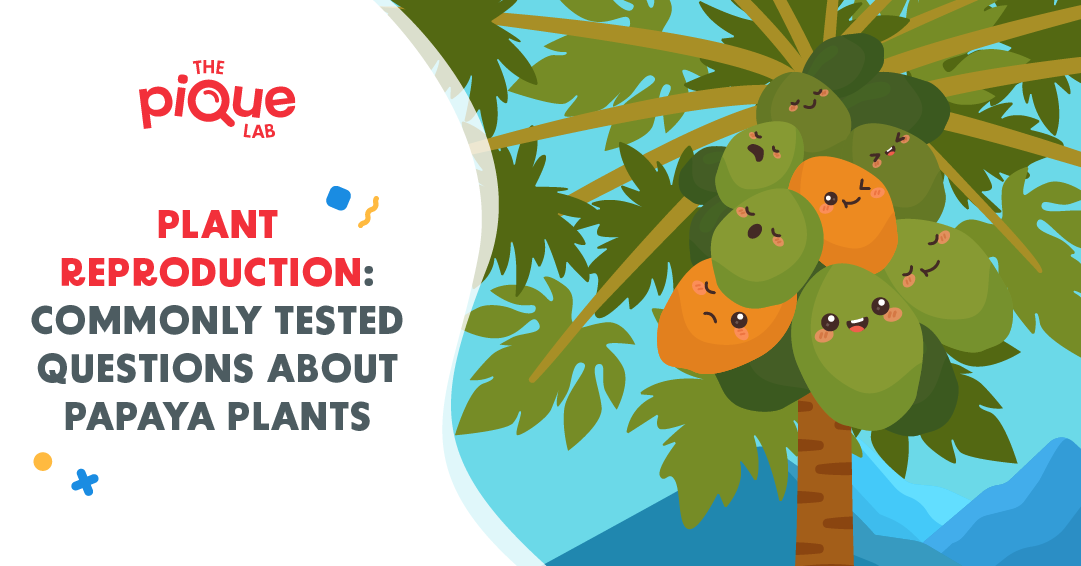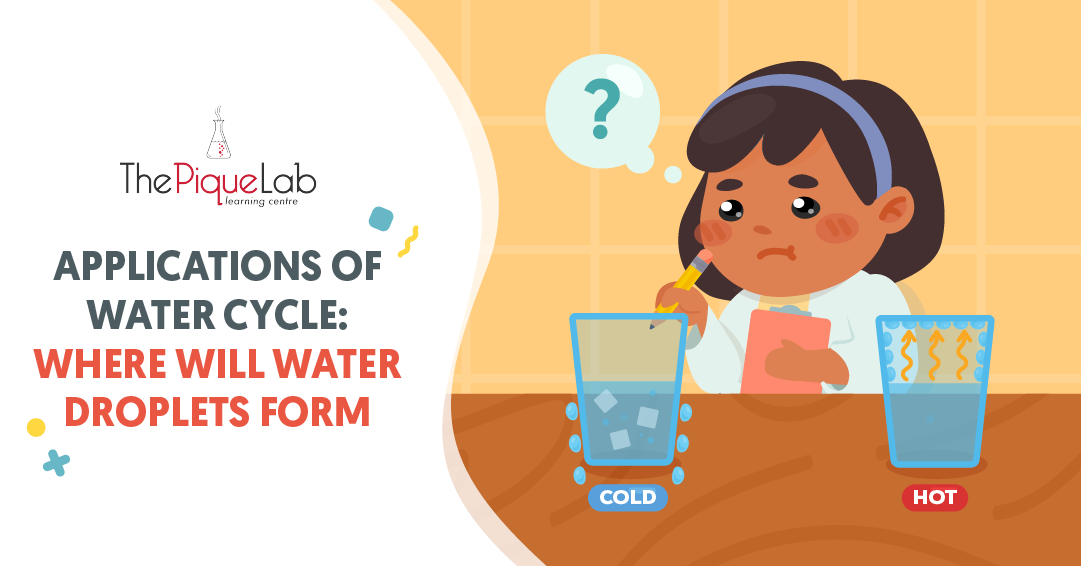Let’s Get Started On This Question!
 Source: Tao Nan School – 2018 P5 SA2 Examination Paper [Q30]
Source: Tao Nan School – 2018 P5 SA2 Examination Paper [Q30]
Hello everyone, what do you think is the fruit drawn in the above question? If your answer is the papaya fruit, you are absolutely right!
❓ Did You Know❓
Papaya seeds are actually edible and peppery in flavour! As a result, some people use them as a substitute for pepper!
Now that we are done identifying the fruit in the above question, I would like you to focus your attention on the diagram of the papaya flower above. Does the above flower have:
- Only female parts
OR - Only male parts
OR - Both male and female parts?
Since we can observe both the stigma (female part) and anthers (male part) in the flower (refer to the image below), this flower actually has both female and male parts, just like a typical flower that you see in examination questions.

❓ Did You Know❓
Other than the papaya flower shown in the question with both male and female parts, there are also some papaya flowers with either only the male parts or only the female parts!
In fact, the papaya flowers with either only the male parts or only the female are more common than the papaya flowers with both male and female parts.
Amazing, isn’t it?
Having shared some fun facts about the papaya seeds and flowers above, here is another interesting fact about the papaya tree:
❓ Did You Know❓
Most of the time, each papaya tree will consist of either only the male flowers (male papaya tree) or the female flowers (female papaya tree).
In the less common cases, the papaya tree will consist of flowers with both male and female parts (hermaphrodite papaya tree).
As such, which tree(s) (male, female or hermaphrodite) will be able to bear the papaya fruits?
To answer the above question, do you recall which is the flower part that will develop into a fruit? It is the ovary.
Is the ovary the male or female part of the flower? It is the female part. Since the papaya fruit must develop from the female part of the flower, the tree(s) that bear(s) papaya fruits must have flowers with female parts, which are the female and hermaphrodite trees!

🔍 Spot The Difference 🔍
The female papaya fruits are rounder while the hermaphrodite papaya fruits are more elongated.
Now that we are done sharing some fun facts about the papaya seeds, flowers and trees, we shall now answer the different parts of the question.
Read Also:
Let’s Analyse Part (A)
 Source: Tao Nan School – 2018 P5 SA2 Examination Paper [Q30]
Source: Tao Nan School – 2018 P5 SA2 Examination Paper [Q30]
To answer part (a) of the question, we begin by asking: “What are the two reproductive processes that must occur in order for flowers to develop into fruits?”
The 2 processes are:
- Pollination, which is the transfer of pollen grains from the anther to the stigma of a flower of the same species.
- Fertilisation, which is the process where the (nucleus of the) male reproductive cell in the pollen grain fuses with (nucleus of the) female reproductive cell in the ovule.
Do you remember which process takes place first? If you have difficulties remembering, let me teach you this acronym, P(ollination)F(ertilisation), which stands for Pollination First.
Referring to the above question, since process X comes first, before process Y, and we also mentioned that pollination comes first before fertilisation, you can easily identify process X to be pollination!
Suggested Answer For Part (A)
Pollination
Let’s Analyse Part (B)
 Source: Tao Nan School – 2018 P5 SA2 Examination Paper [Q30]
Source: Tao Nan School – 2018 P5 SA2 Examination Paper [Q30]
Referring to the image in the question above, what do you think part Q is? You should easily identify part Q to be the seed.
Now recall, which part of the flower will develop into a seed? The answer is the ovule, which is a structure found inside the ovary.

Suggested Answer For Part (B)
Ovule
Let’s Analyse Part (C)
 Source: Tao Nan School – 2018 P5 SA2 Examination Paper [Q30]
Source: Tao Nan School – 2018 P5 SA2 Examination Paper [Q30]
To answer part (c), many of my students wrote the following answer:
“The monkey will eat the fruit and poop out the seeds at location B.”
Is this answer above conceptually correct? Yes. However, will I award full marks for the above answer? The answer is “no”, and here are the reasons why:
❌ Problem 1 ❌
The phrase “poop out” is not scientific.
✅ Solution 1 ✅
Use the phrase “passed out together with the waste” instead.
Now that we have identified the solution to the first problem, let us modify the original answer to the following (rectified parts in red):
“The monkey will eat the fruit and pass out the seeds together with the waste at location B.”
Am I able to award full marks for the above answer then? No.
❌ Problem 2 ❌
The answer did not mention how the seeds were able to enter the monkey’s body before being passed out together with the waste.
✅ Solution 2 ✅
Since the seeds are small, as seen in the question, the answer has to mention that the small seeds would be swallowed by the monkey when it feeds on the fruit, before the seeds are passed out together with the waste.
Now that we have identified the solution to the second problem, let us further modify the answer to the following (rectified parts in red):
“The monkey feeds on the flesh of the fruits and swallows the small seeds, which will be passed out together with the waste at another far away location, B.”
How about now? Is the answer perfect yet? No.
❌ Problem 3 ❌
The answer is still missing another important characteristic of the seeds.
For the seeds to be passed out together with the waste, should the seeds be digestible or indigestible? Indigestible.
✅ Solution 3 ✅
The answer should specify that the seeds are indigestible.
Suggested Answer For Part (C)
Thus, we have the final version of the suggested answer for part (c):
The monkey feeds on the flesh of the fruits and swallows the small indigestible seeds, which will be passed out together with the waste at another far away location, B.
Let’s Analyse Part (D)
 Source: Tao Nan School – 2018 P5 SA2 Examination Paper [Q30]
Source: Tao Nan School – 2018 P5 SA2 Examination Paper [Q30]
As most students have a good understanding on the importance of seed dispersal, I would not be explaining the concept in detail. Rather, let me share with everyone the answer that my students commonly write, and discuss if the following answer can be awarded full marks!
“The dispersal of seeds prevents overcrowding and competition for water, mineral salts, space, and sunlight.”
How is the answer above? Did you manage to spot any issues with the answer above?
Problem 1
If you are raising your eyebrows at the word “prevents”, you are on the right track! Can overcrowding and competition be entirely avoided (prevented) when seed dispersal occurs? No. For example, in the case of splitting, even though the seeds are dispersed further away from each other, they will still be relatively near to each other, which might still result in some degree of overcrowding.
Solution 1
Thus, the more accurate term to use is “reduce” overcrowding instead of “prevent”.
Problem 2
When your favourite athlete is having a “competition”, you will like to know which other athletes are also in the same competition. Similarly, when “competition” is mentioned in your answer, it is also important to mention the subjects that are competing with each other, which is not mentioned in the above answer.
Solution 2
Specify that the competition is between the parent plant and the young plants.
Applying solutions 1 and 2 above, let us modify the answer to the following (rectified parts are in red):
“The dispersal of seeds reduces overcrowding and reduces competition between the parent plant and the young plants for water, mineral salts, space, and sunlight.”
How about now? Is the above answer complete? No.
Problem 3
We have explained the rationale for seed dispersal in the above answer, but we have not linked the rationale for seed dispersal to the expected outcome of seed dispersal.
With less overcrowding and competition between the parent plant and young plants for resources, what is the expected outcome of seed dispersal? The young plants should grow more healthily.
Solution 3
To complete our written answer, we must also include the outcome of seed dispersal, which is to “ensure healthier growth of the young plants”.
Suggested Answer For Part (D)
✨ Seed Dispersal Template Answer
“The dispersal of seeds reduces overcrowding and reduces competition between the parent plant and the young plants for water, mineral salts, space, and sunlight, ensuring the healthier growth of the young plants.”
The answer above is known as our “Seed Dispersal” template answer. In the future, if a question asks you about the importance of seed dispersal, you can memorise and apply the above template answer (with little or no change), since the reason and the outcome of seed dispersal is always the same.
Conclusion
I hope you have enjoyed reading this article and that this article has helped you gain a better understanding on how to approach some of the commonly tested questions for Plant Reproduction.
Continue to keep a lookout for our new articles! 🙂

If you like our methodology, we've some upcoming workshops:







